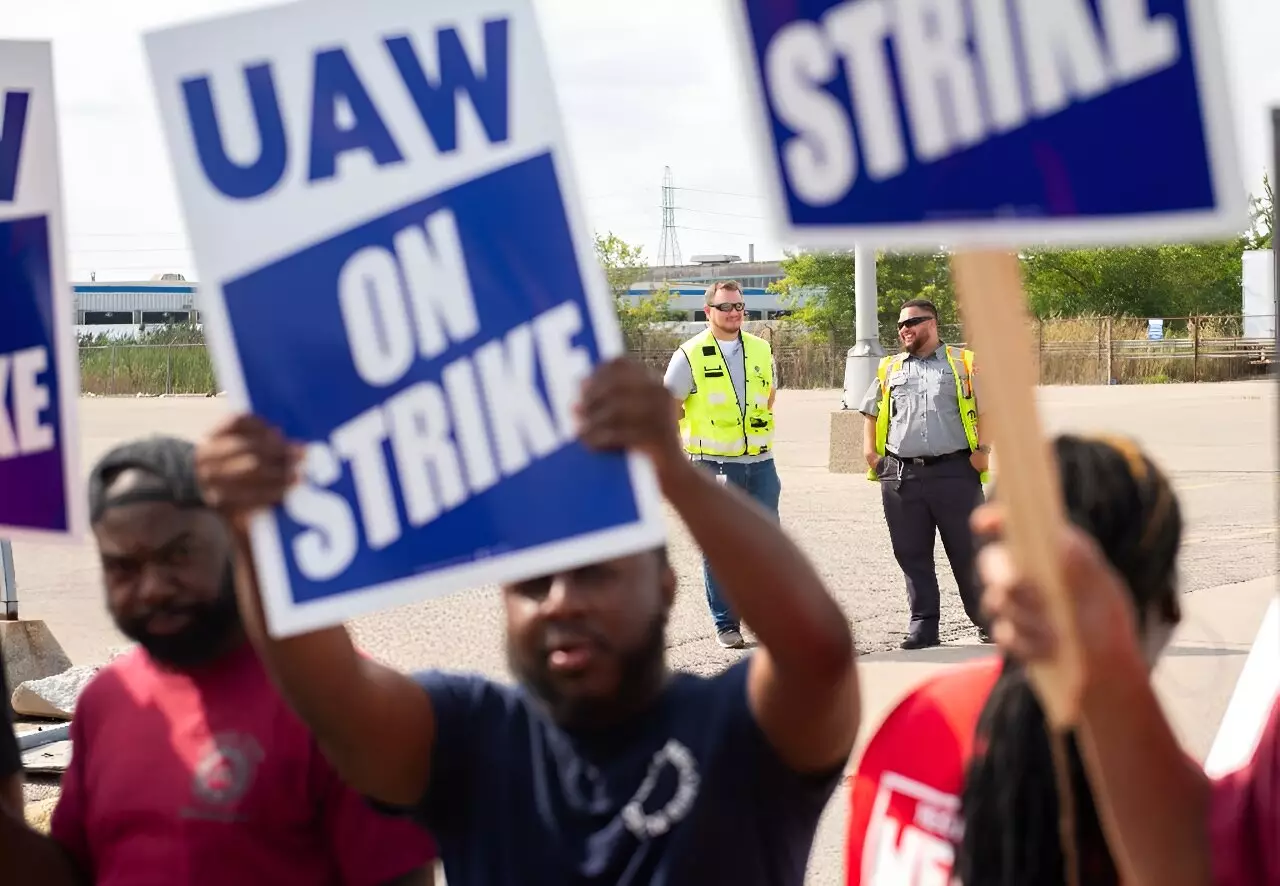The recent announcement of a preliminary labor contract agreement between Stellantis and the United Auto Workers (UAW) union marks a significant milestone in the ongoing battle for worker rights in the American automotive industry. After 44 days of strike action that simultaneously targeted Detroit’s “Big Three” automakers, the UAW has achieved a tentative deal that is similar to the one struck earlier this week with Ford. This article will explore the key details of this agreement and its potential impact on the American working class.
One of the major highlights of the tentative contract is the inclusion of a 25 percent raise in base wages by 2028. Furthermore, cost of living adjustments will cumulatively raise the top wage by 33 percent, resulting in an hourly wage of over $42. While this wage increase falls short of the 40 percent initially sought by UAW President Shawn Fain, it is a significant improvement compared to the initial proposal put forth by Ford which only included a nine percent increase. This wage increase, coupled with improved benefits, ensures that workers are provided with the pay, dignity, and respect they deserve.
Another key aspect of the agreement is the creation of new job opportunities within the Stellantis organization. Fain announced that approximately 5,000 jobs will be added over the course of the contract, reversing the hitherto pursued job cuts by the automaker. This is a positive development as it not only provides job security for existing employees but also offers new avenues of employment for individuals seeking work in the automotive industry. By prioritizing job creation, both Stellantis and the UAW are demonstrating their commitment to supporting the American working class.
While the preliminary agreement with Stellantis is a significant step forward, it is important to note that it still needs to be ratified through a vote by UAW members. This process ensures that the decision-making power ultimately lies in the hands of the workers themselves, allowing them to have a say in their own employment conditions. In the meantime, striking Stellantis workers, along with their Ford counterparts, will be returning to work while the agreement undergoes the ratification process. This demonstrates a collaborative approach and willingness on both sides to continue negotiations in good faith.
The agreement has garnered praise from various quarters, including President Joe Biden who publicly applauded the UAW and Stellantis for reaching a historic deal. As the first sitting US president to join UAW members on a picket line last month, President Biden understands the significance of fair labor practices and worker rights. He recognizes that this agreement guarantees workers the pay, benefits, dignity, and respect they deserve, setting a positive precedent for future negotiations in the automotive industry and beyond.
While the Stellantis-UAW agreement represents a significant breakthrough, it is important to acknowledge the challenges that lie ahead. General Motors (GM) remains the only automaker without a tentative deal, indicating that negotiations are ongoing. Furthermore, just as the Stellantis deal was announced, workers at GM’s Spring Hill assembly plant in Tennessee initiated a strike. These developments underscore the ongoing struggle faced by American workers in their pursuit of fair labor conditions. However, the progress made with Stellantis and Ford serves as a testament to the collective power of workers and the impact they can have when they unite under a common cause.
The preliminary labor contract agreement between Stellantis and the UAW union is a significant step forward for the American working class. With a substantial wage increase, improved benefits, and the creation of new job opportunities, workers can look forward to a brighter future. The ratification process and the return to work of striking employees demonstrate the commitment of both parties to continued negotiations and a collaborative approach. As President Biden aptly stated, this agreement guarantees workers the pay, benefits, dignity, and respect they deserve, setting a historic precedent for labor rights in the automotive industry. While challenges remain, the Stellantis-UAW agreement is a testament to the power of collective bargaining and the potential for positive change in the realm of worker rights.


Leave a Reply